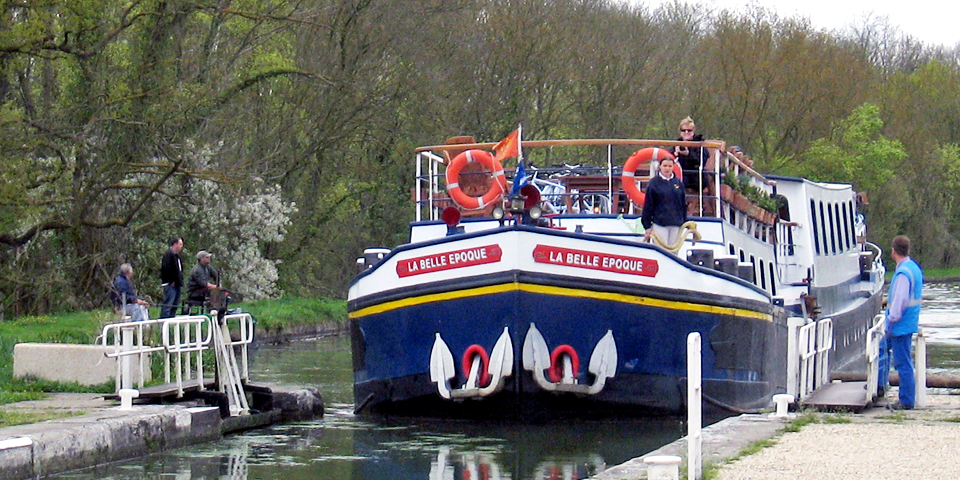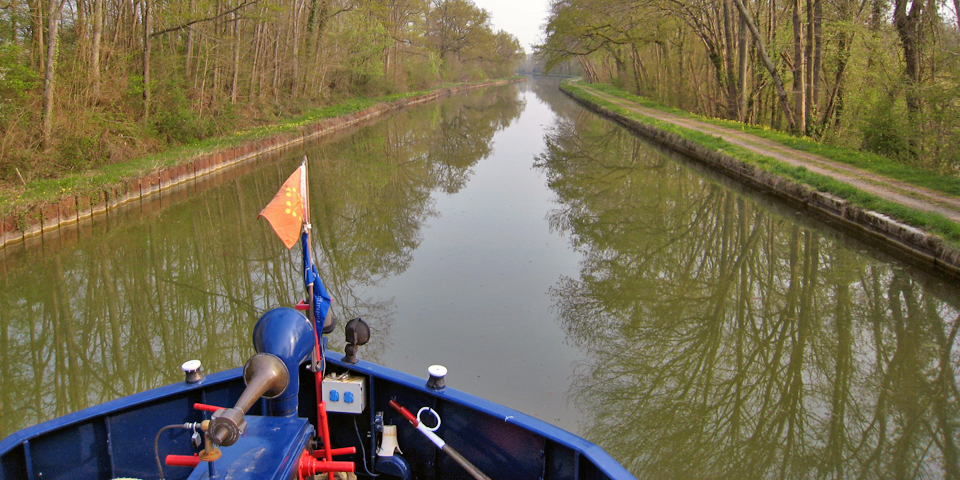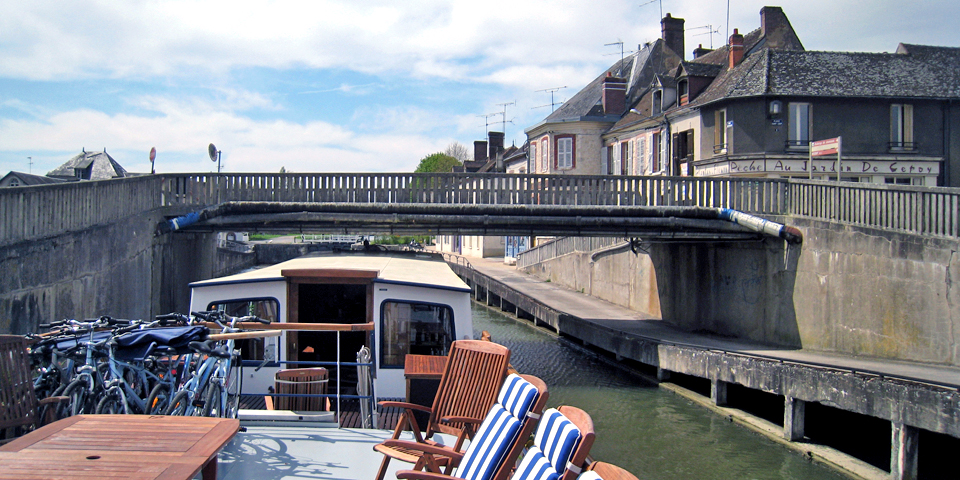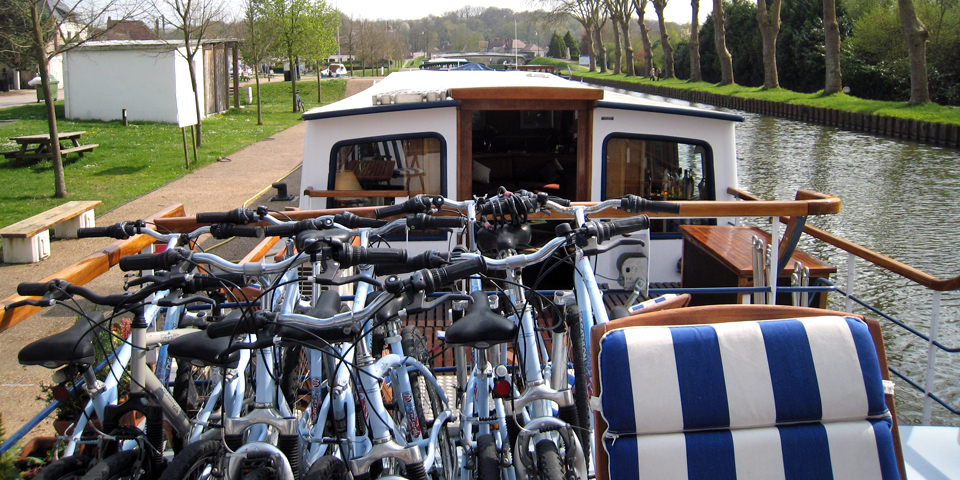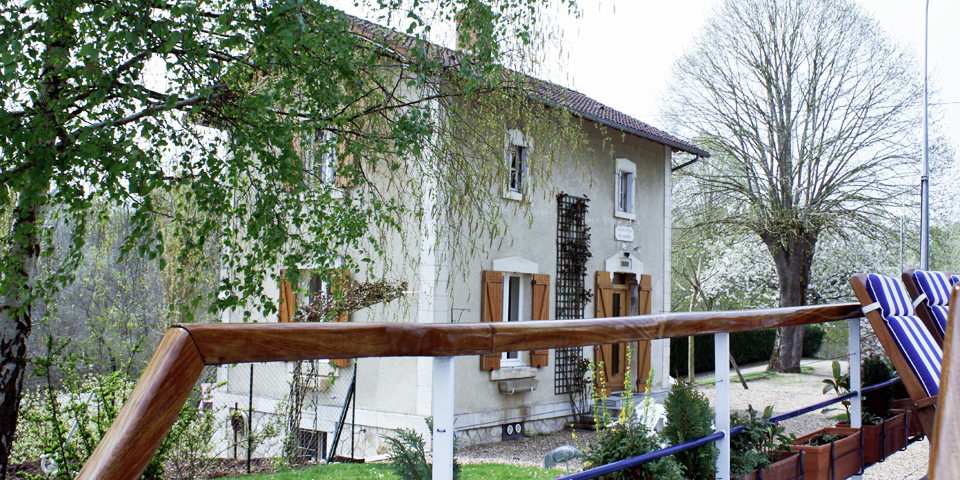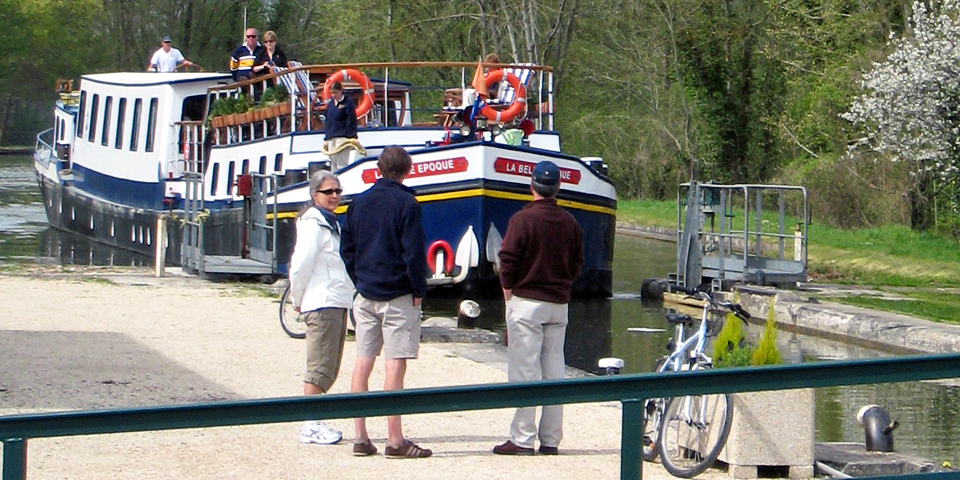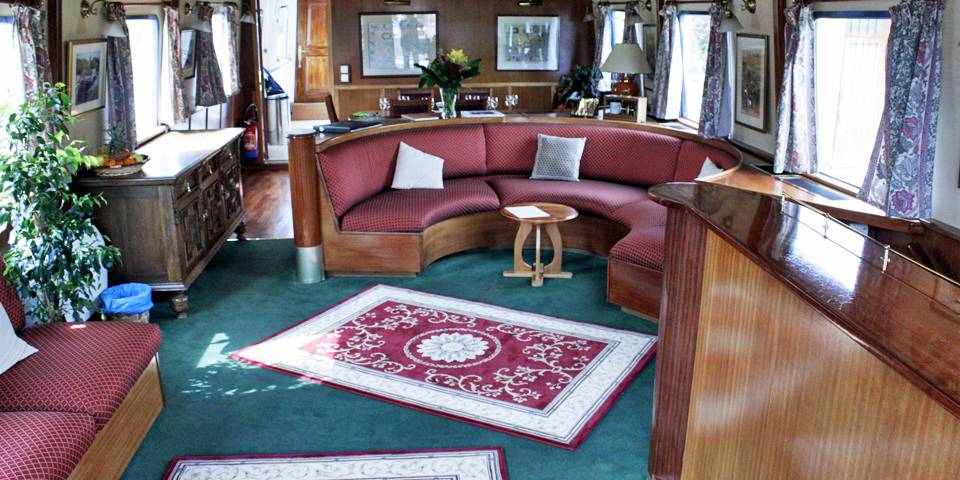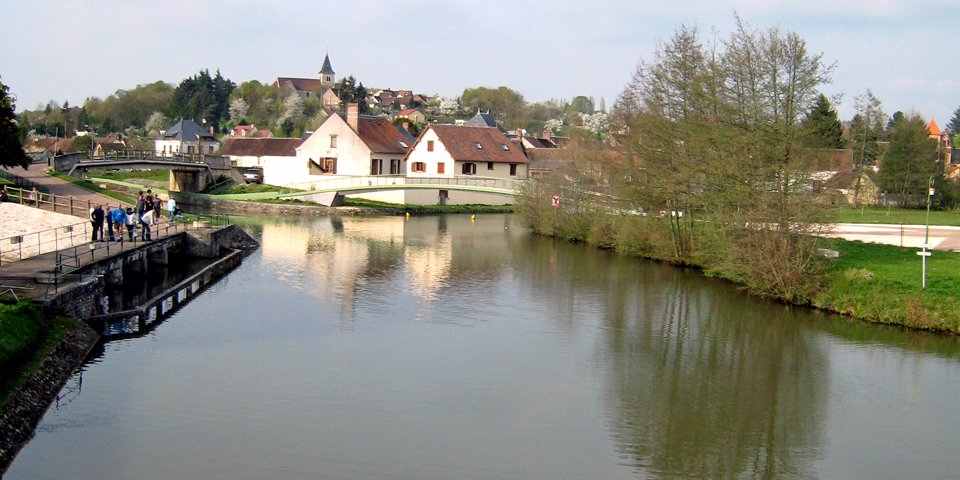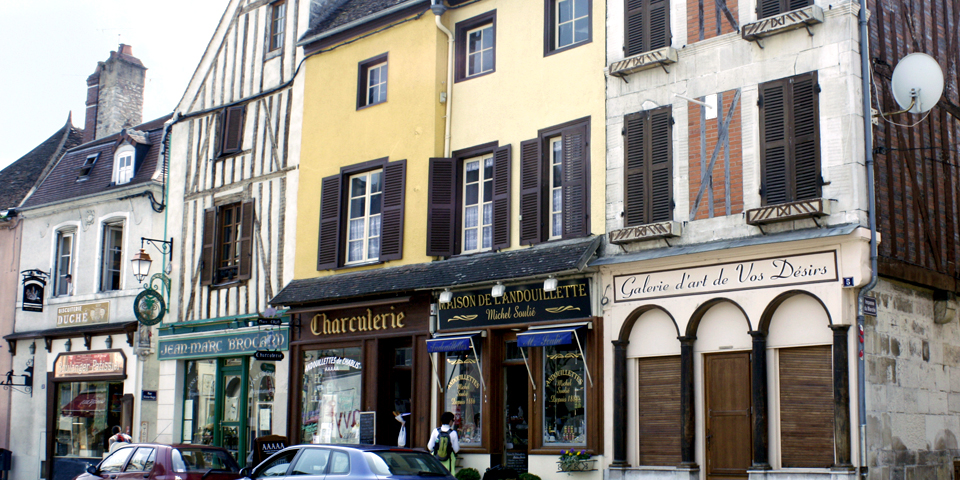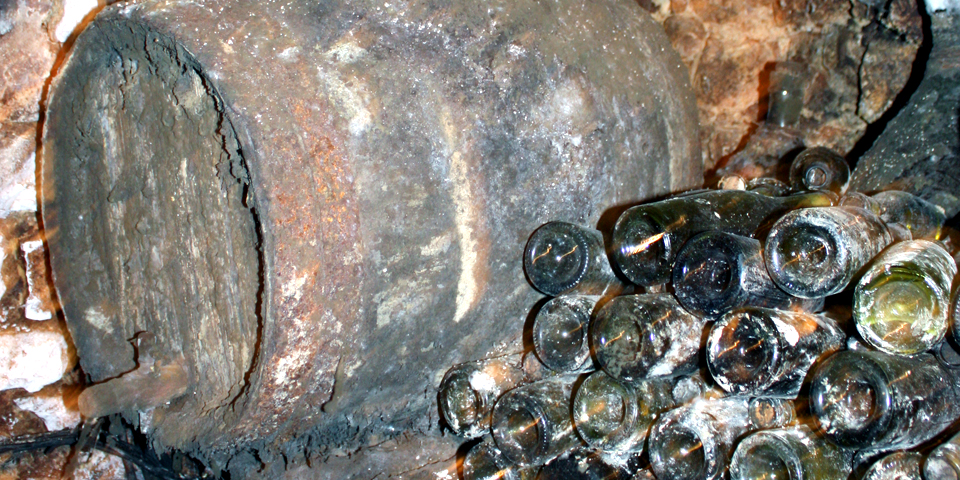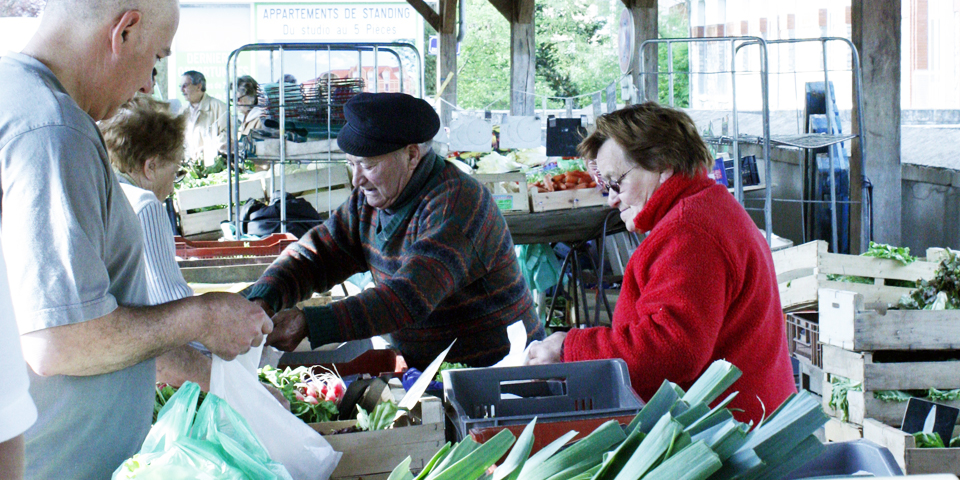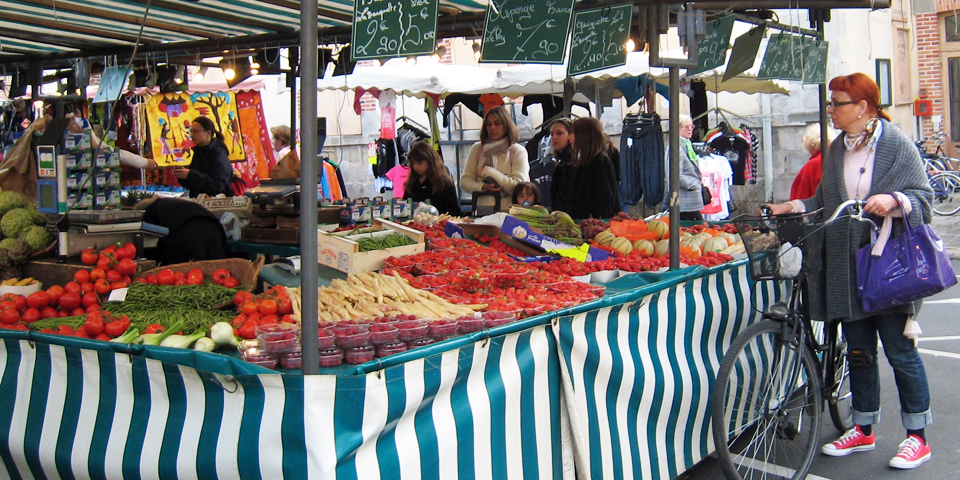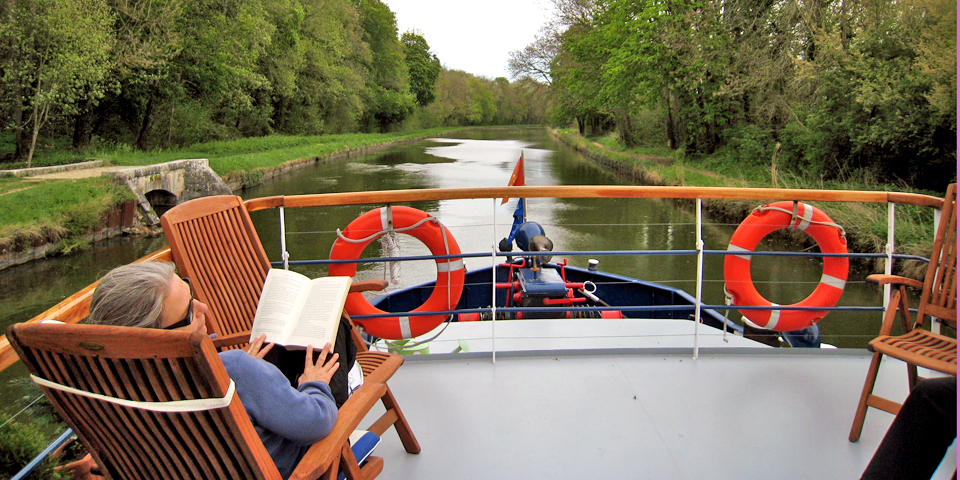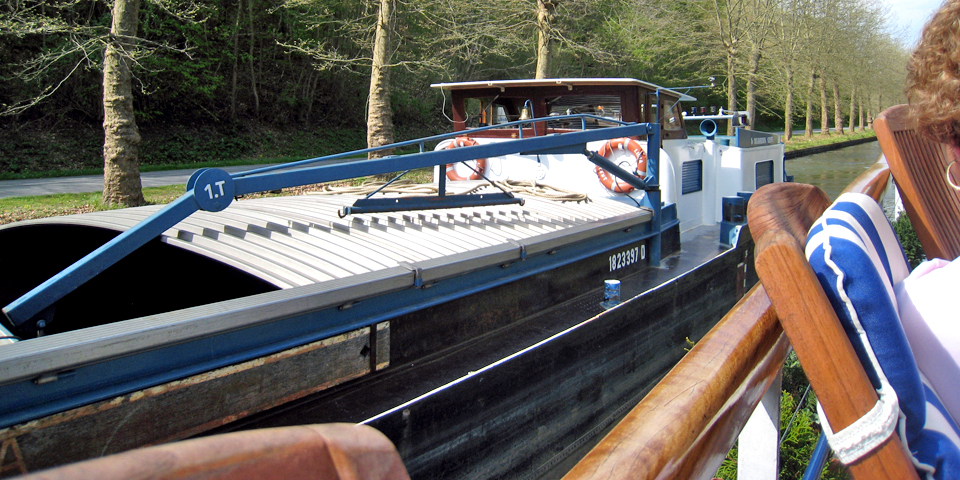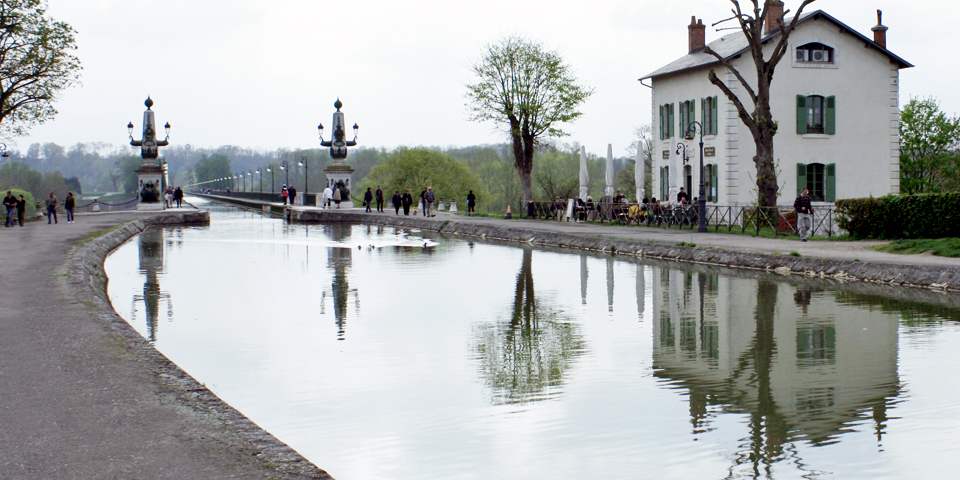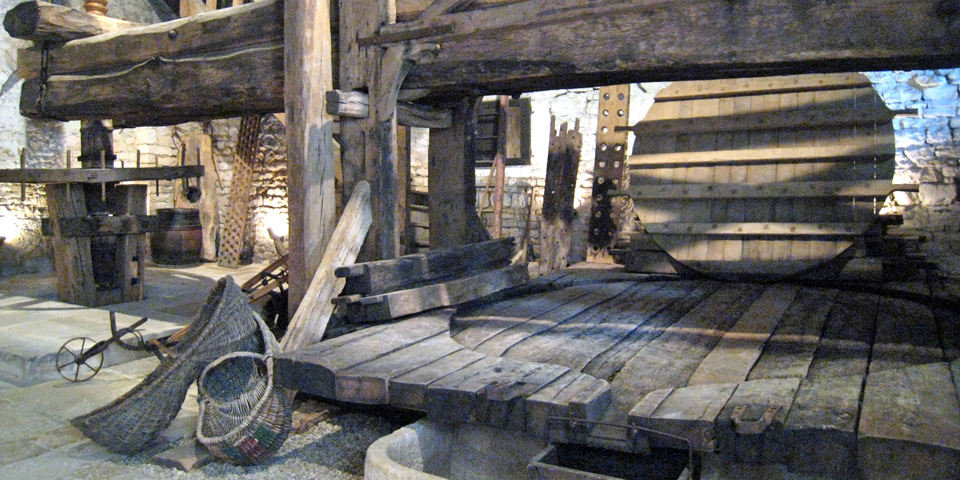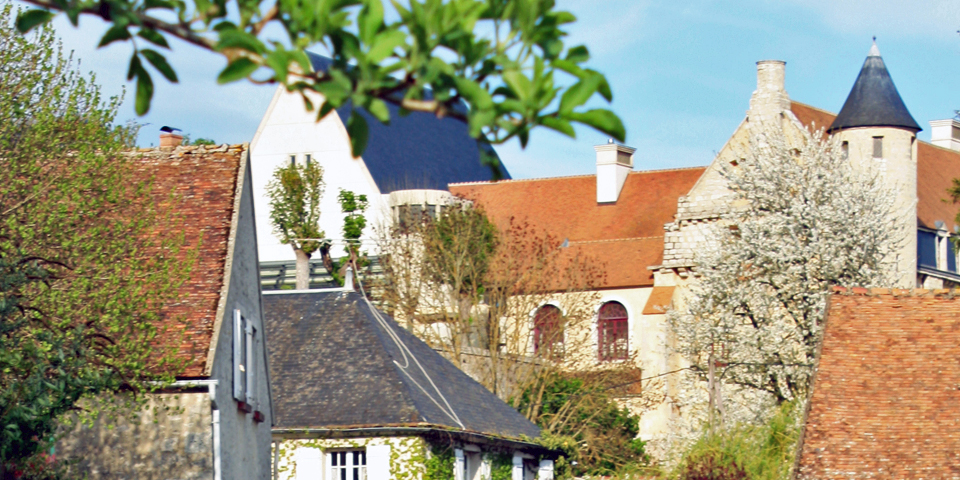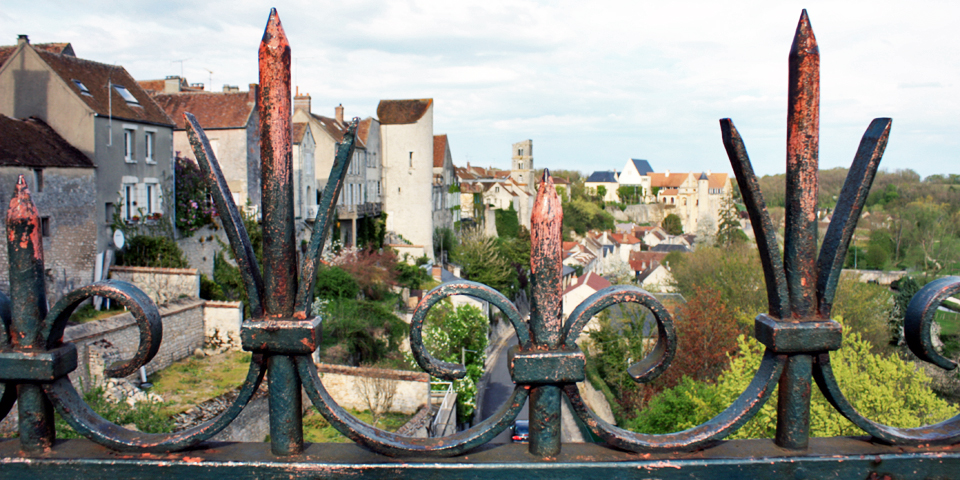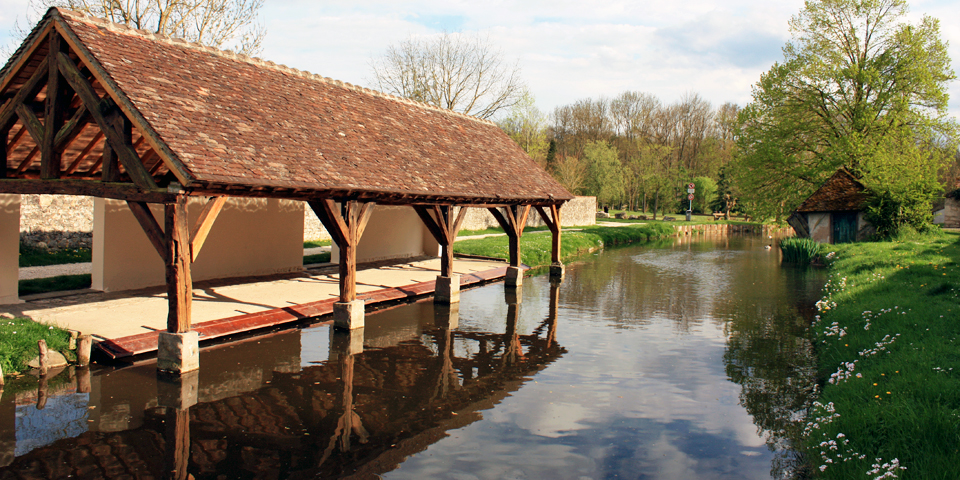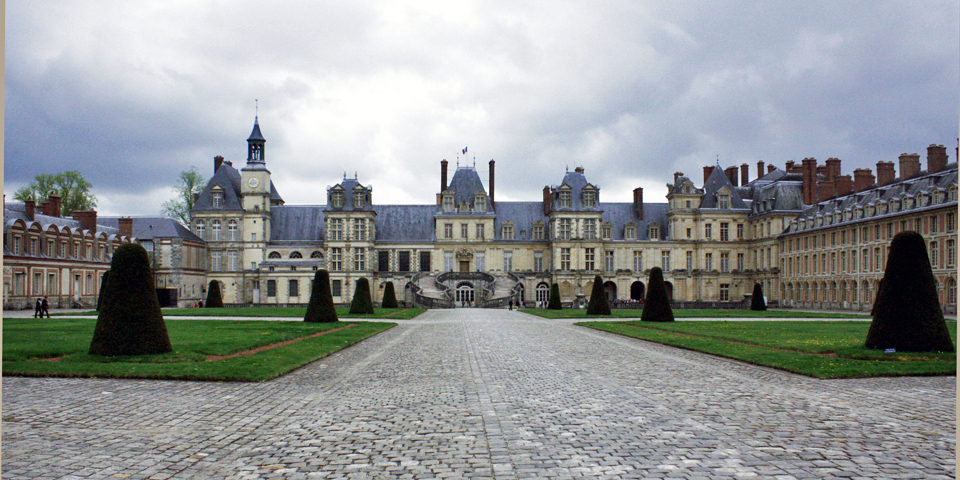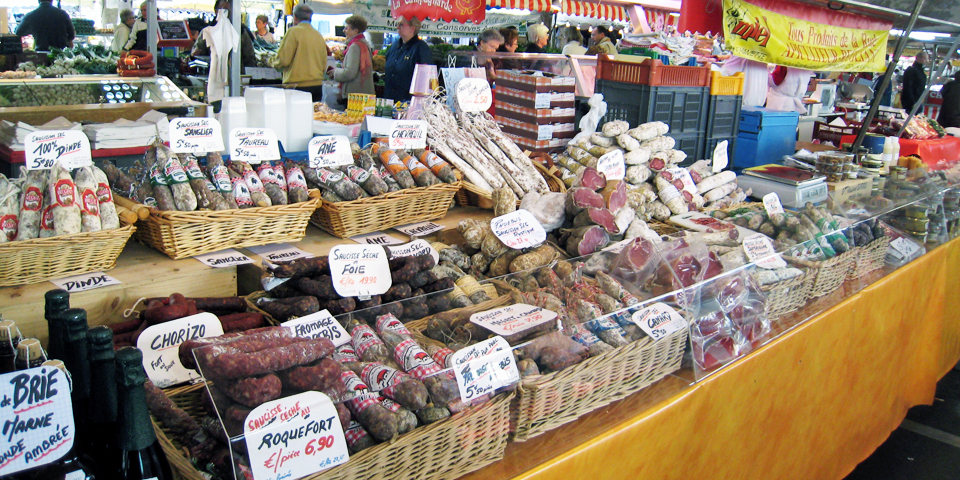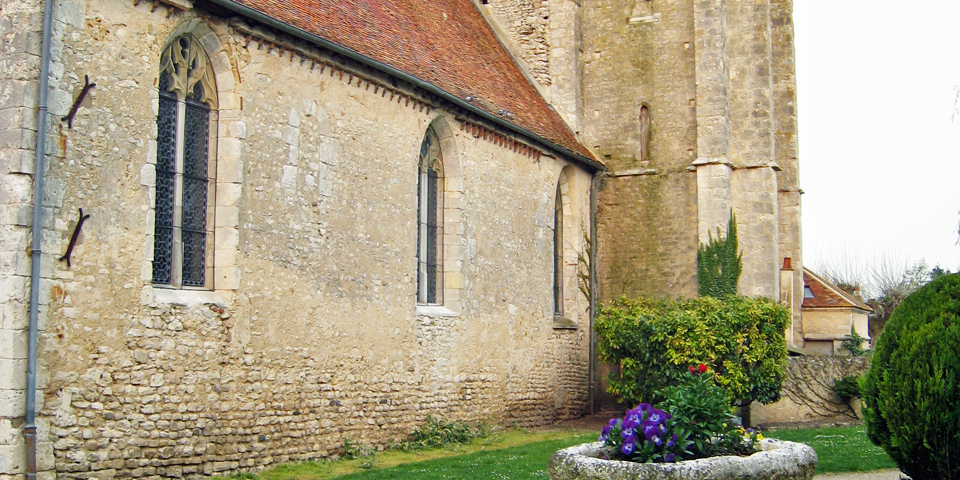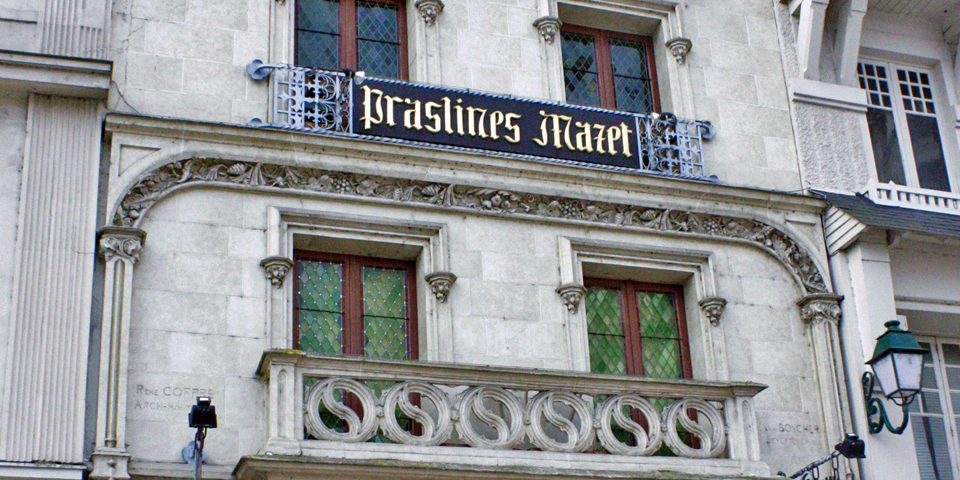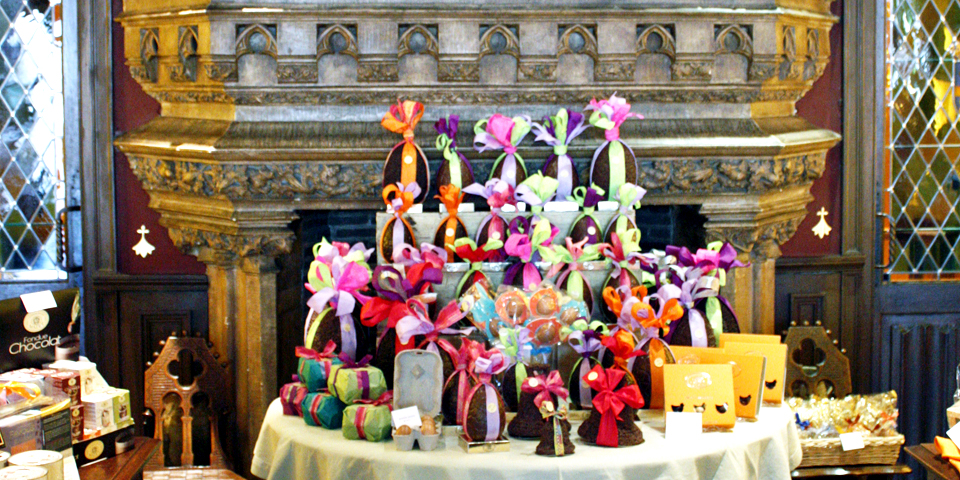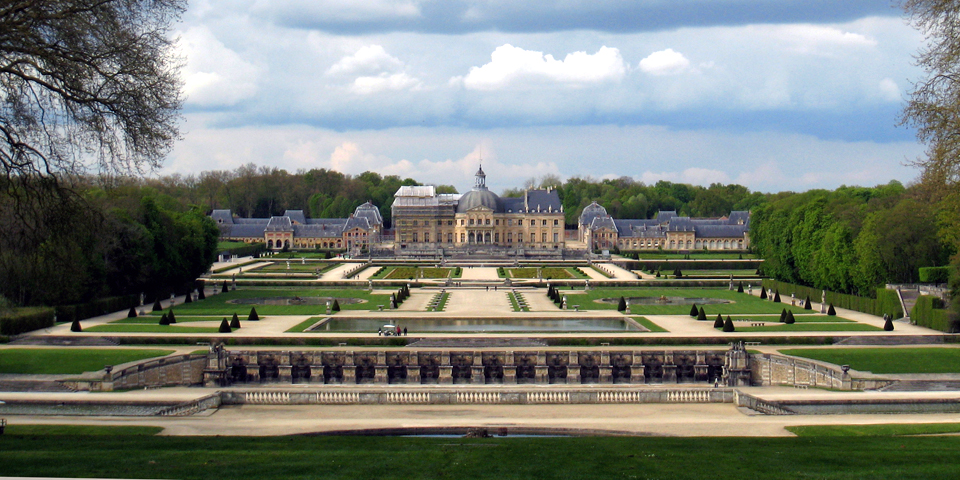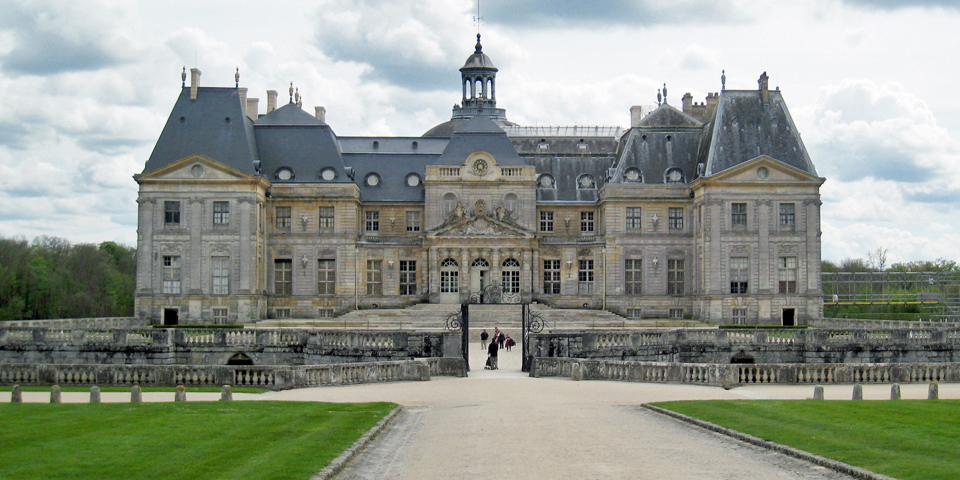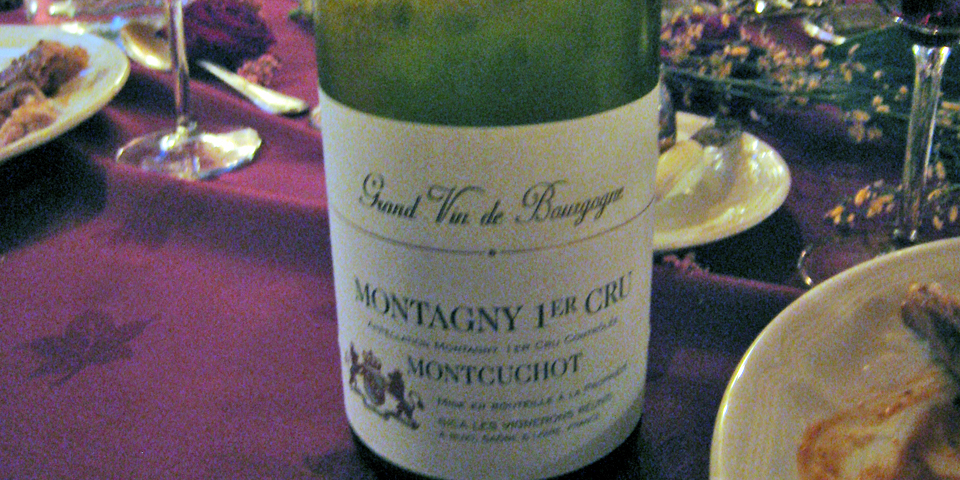La Belle Epoque: Barging through the Burgundy region of France
Burgundy — we know it as a deep red hue, the color of a wine from a country where it is named not by the grape from which it is made but by the region in which it is produced. The Burgundy region, southeast of Paris, is fruitful, prosperous and rich in history, culture, and gastronomy.
Burgundy was once a powerful independent province ruled by the influential Dukes of Burgundy, whom Philippe the Good called “lords of the best wine in Christendom”. Culinary terms referring this region have come to symbolize the world’s finest cuisine. Bourguignon is Burgundy-style with a red wine sauce. Dijonnaise means in a mustard sauce, as in Dijon, the city renowned for its production of this condiment.
Parisians take the highway or high speed TGV train here simply to partake of a favorite dinner. Visitors are drawn from around the world for the legendary foods and wines and the joie du vivre, the art of living, that is difficult to define and best understood by experiencing it.
The waterways are charged with magic, but nothing about them is more magical than the difference made by the few feet of water which separate the boat from the land. Those few feet instantly set the boatman in a world of his own, and his vision of the outer world though which he glides, becomes magically calmer and clearer. …The degree to which it is true can be confirmed only by experience. Know Your Waterways by Robert Aickman (1955)
Transporting goods though what was often hilly region was once an arduous task accomplished by horse cart. In 1727 work began on the Canal of Burgundy, a connection between the Yonne and Saône Rivers. The system of locks through this agricultural region of small towns and hamlets was completed in 1832, enabling barges carrying hundreds of tons of cargo to navigate hilly terrain and pass through France’s inland waterways from the Atlantic Ocean to the Mediterranean Sea.
Today, many of the barges have been converted to floating luxury hotels. Barge travel provides a behind-the scenes view while offering the convenience of cruising. Simply unpack once and travel effortlessly while relaxing, dining, and enjoying onboard amenities. Everything is taken care of, including local excursions with your own tour guide in an air-conditioned minibus.
The barge travels slowly, about the pace of a brisk walk, along tree-lined canals. The pace is never rushed, and is as active as you like. Stroll or ride a bicycle along the towpaths, explore a local village, and wait for the barge to catch up with you at a lock.
Watch the lockkeeper operate hand-swung bridges and locks in the centuries-old way as his children wave from their garden or the windows of their historic cottage. If you arrive at a lock during or too close to lunch time in this country where break times are strictly observed, you will wait. This is part of the experience. This vacation is about immersion in local life, not the speed or distance traveled.
Barge Life
Our cruise of local and culinary discovery was aboard La Belle Époque, the flagship barge of European Waterways, Ltd. Before it was converted to a floating hotel in 1995 and refurbished in 2006, La Belle Époque was a freight barge carrying logs from Burgundy to Paris and Amsterdam. Built in 1930, it is 126 feet long, 16 ½ feet wide and can travel at a maximum speed of 10 knots (11.5 mph).
The crew consisted of a captain, a tour guide/deck hand, two housekeeper/hostesses and a chef. A maximum of thirteen passengers are permitted, so service is attentive and personalized. Crew members are primarily from the UK and speak English and French.Passengers are primarily from North America or the UK.
Our Captain, Chef, and one housekeeper were from England. Our tour guide was a former rugby player from Scotland, and the second housekeeper was from New Zealand.
The tour guide picked us all at a designated Paris hotel. We were driven to the barge, where we were welcomed by the captain and rest of the crew with a champagne reception.
La Belle Époque has a sundeck, a small spa pool, a wood paneled saloon, a small library, and a dining room with a table large enough to accommodate all passengers. The seven comfortable passenger cabins have twin or double beds and en-suite facilities and are referred to as two suites (150 and 165 sq. ft.), one at each end, four junior suites (125-130 sq. ft.), and one single cabin (90 sq. ft.). The barge is fully air-conditioned, and electricity is French 220 voltage.
The route is usually on the lower Nivernais Canal and River Yonne, but since ours was the first trip of the season we traveled from the winter docking spot near the seven 350-year-old locks of Rogny-Les-Sept-Écluses to Moret-sur-Loing, a medieval town that inspired such Impressionist painters as Monet, Renoir, and Sisley.
If booking a trip at the beginning or end of the season, be sure to clarify in advance just what the itinerary will be.
The six night cruises run from Sunday to Saturday and are all-inclusive–meals, regional wines with the candlelit dinner, open bar with alcoholic and soft drinks available at all times, daily excursions with your onboard guide, bicycles, binoculars and local transfers. Dress code is casual.
Bring comfortable walking shoes to wear onboard and for tours. Evenings may be chilly, and as with most travel, layers of clothing work well. Bring along a sweater, jacket, rainwear, and an umbrella. Dress up as much as you like for the Captain’s Dinner on the final night, but you needn’t add much more to your suitcase than a blazer for men and a dress or pantsuit for women. I brought along a dressy jacket that could be worn with classic black slacks used throughout the trip.
Internet service was not available onboard this barge for our trip, but check in advance. It has been added to most barges now. Smoking is allowed only on deck and away from other guests.
About our Journey
Each day is a unique sampling of the local culture through its regional wines and cuisine, outings, and casual observations. You might travel past little-known communities or visit a medieval village, historic town, or troglodyte dwelling carved out of the rocks. You might spot a group of men in a spirited game of lawn bowling known as pétanque.
Your day might include wine tasting at a small vineyard like Bersan and Fils in Saint-Bris-Le-Vineuxor, where an 11th century underground labyrinth of vaulted passageways leads to aged bottles and oak barrels.
You might stop at a colorful local market, explore a Romanesque abbey or visit the grand Renaissance-style chateau that inspired Versailles. For a birds-eye view of this storybook countryside, hot air balloon rides can leo be arranged.
We were in the heartland of France, the land where Charolais cattle become the finest beef, Bresse chickens are raised for poultry dishes of the highest quality, and Burgundy snails are combined with Chablis wine and garlic butter and transformed into escargot. This agricultural area is known for producing the ingredients that go into creating the area’s renowned gastronomic delights, including legendary sauces, cheeses and wines. Local black currants (cassis) are made into a liqueur known as Crème de Cassis, which is mixed with a dry white Burgundy wine for Kir, the French aperitif.
Burgundy is a region with a mild climate, warm dry summers, nutrient rich soil and sufficient rainfall for a fruitful harvest. The hillsides provide the ideal terroir for the production of grapes. Family-run vineyards are part of the area’s 60,000 acres of vines arranged in orderly rows. One of the loveliest and most colorful times to visit is autumn—September and October, when there are festivals and the caves are open.
Regional cuisine
The day begins with a continental breakfast that always included fresh breads from local bakeries. Ah, those chocolate croissants! Lunches tended to be salads with cold meats or quiche. Dinner was a regional specialty like Pork Dijonnaise or Duck à l’Orange by candlelight, topped off by a plate of regional cheeses, each course accompanied by a regional wine. Coffee and liqueurs followed.
Each cheese comes with its own story. Legend has it that Ossau-Iraty is one of the first cheeses ever made. This ewe’s milk cheese from the Pyrenees is aged in caves or mountain huts until it reaches its hazelnut fragrance and buttery flavor. It is said to have been created by the shepherd son of Apollo. Burgundy’s creamy Chaource, made since the 14th century in a town by the same name, was one of Napoleon’s favorites. The pungent and creamy Époisses, first produced by Cistercian monks in the 16th century, has a rind made orange by the washings with Marc de Bourgogne brandy. Valançay is a goat cheese from the Loire Valley. This favorite of Napoleon is said to have been designed in a pyramid-shape for him during the Egyptian campaigns but made with a flat top after the defeated Le General himself severed the peak with his sword.
Wine production in France can be traced back to the Gallo-Roman era and the early religious settlements. Among our many dinner wines were Pouilly-Fumé, a white wine of the Loire valley entirely of Sauvignon blanc grapes, St. Véran, a relatively new appellation similar to Pouilly-Fuissé, produced with chardonnay grapes in the village by the same name in the Mâconnais region of Burgundy, the robust Nuits-St-Georges, a rich and complex pinot noir with a long finish and one of the most famous Burgundy wines, and Montagny 1er Cru, a chardonnay from the town of Montagny in the Côte de Chalonnaise, where the renowned terroir has been honored with the designation 1er Cru.
General information
European Waterways is in its 35th year of barging holidays. Their barges travel the canals, rivers, and lagoons of France, Scotland, England, Ireland, Italy, Holland, and Belgium. Two barges, Enchanté and Napoléon, are being added in 2009, cruising in Provence, Carmargue and the Canal du Midi.
Cabins may be booked individually or the entire boat can be chartered with family or friends. Charter itineraries can be customized to accommodate special interests.
Tennis tournaments and golf competitions can be arranged for sports enthusiasts. Theme charters focus on special interests like festivals, hiking, golf, or wine. Two-barge tandem cruises can be arranged to accommodate up to 21 passengers.
Visit the website to sign up for the newsletter and learn about special offers.
Additional photographs
he plane trees planted along the canals are the same kind Napoleon ordered planted along roadsides to provide shade for his troops.
A trip along the canal is an opportunity to observe the traditional barge lifestyle.
The Briare canal crosses a 2174’ bridge designed by Gustav Eiffel that spans the Loire River.
A 9th century monastery and 13th century oak press are among the historical treasures to be found in the wine village of Chablis.
Château Landon was a wealthy town in the Middle Ages with a Royal abbey devoted to St. Severin, who healed King Clovis.
The fortified Château Landon was the birthplace of the father of King Henry II. The stone from this area was used to build Notre Dame and the Pantheon in Paris.
This picturesque area of Château Landon was used for washing by the Romans in the time of Julius Caesar.
The Palace of Fontainebleau is one of the largest royal palaces in France. Napoleon left to go into exile from the horseshoe-shaped staircase.
Fontainebleau market—On Friday morning there is a colorful market in Fontainebleau, France.
One night we docked by a village church.
Montargis and Mazet Confiseur are renowned for its pralines, a toasted almond confection in a shell of caramelized sugar. Their pralines are still made according to the original recipe created for the Duke of Plessis-Praslines, who gave these candies to the ladies of the Court during the reign of Louis XIII.
Learn how the grand Renaissance-style château Vaux le Vicomte became the inspiration for Versailles. Vaux le Vicomte was the site of the fairytale wedding of Desperate Housewives star Eva Longoria and San Antonio Spurs basketball player Tony Parker.
Dinner was a regional specialty like Pork Dijonaise or Duck à l’Orange by candlelight, topped off by a plate of regional cheeses, each course accompanied by a regional wine. Coffee and liqueurs followed.

